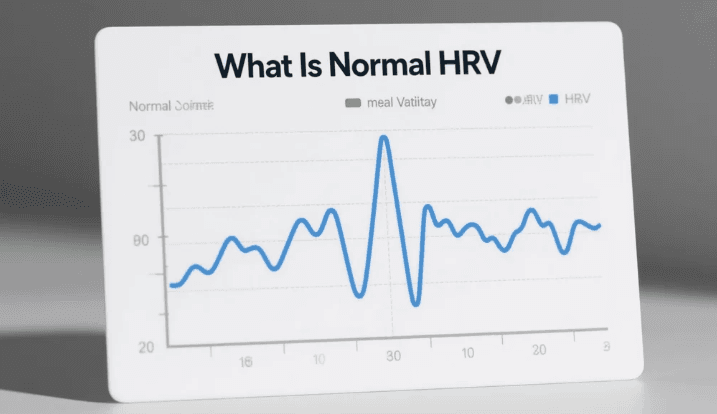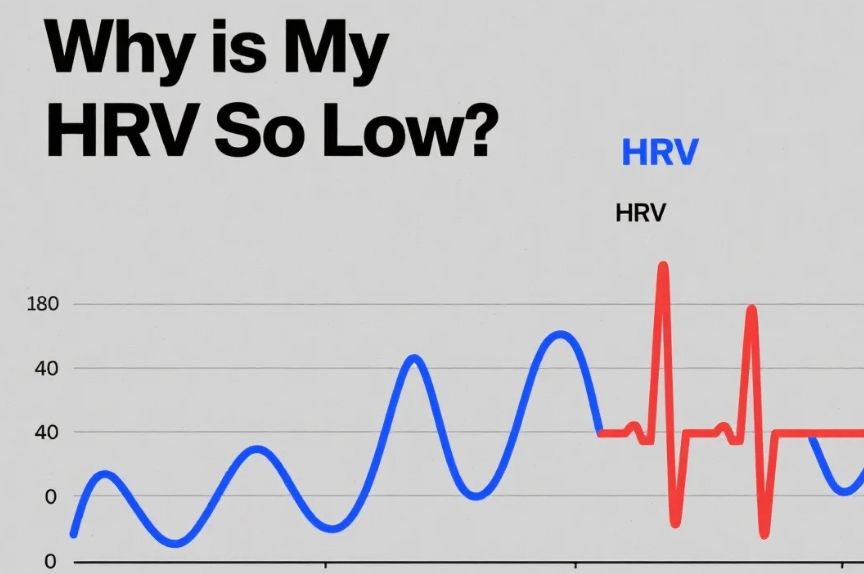What Is Normal HRV? Understanding Your Heart Rate Variability
Heart Rate Variability (HRV) is a key indicator of your overall health, stress levels, and fitness. Unlike your heart rate, which measures beats per minute, HRV tracks the subtle variations in time between each heartbeat.
A higher HRV generally indicates better cardiovascular health and stress resilience, while a lower HRV may signal fatigue or overtraining.
But what is considered a normal HRV, and how can you measure it accurately? In this guide, we’ll explore the science behind HRV, healthy ranges, factors that influence it, and the best ways to track it—including using advanced tools like the BodyWave app for precise monitoring.
What Is HRV?
HRV measures the time differences between consecutive heartbeats, controlled by your autonomic nervous system (ANS). The ANS has two branches:
- Sympathetic nervous system (fight-or-flight response)
- Parasympathetic nervous system (rest-and-digest mode)
A balanced ANS leads to higher HRV, meaning your body adapts well to stress. A low HRV suggests dominance of the sympathetic system, often linked to chronic stress or poor recovery.
What Is a Normal HRV?
HRV varies widely among individuals due to factors like age, fitness level, and genetics. However, general HRV ranges (measured in milliseconds, ms) are:
- Excellent: 60+ ms (high variability, strong recovery)
- Good: 40-60 ms (healthy balance)
- Fair: 20-40 ms (moderate stress or fatigue)
- Low: Below 20 ms (high stress, poor recovery)
Note: Athletes and young adults often have higher HRV, while older individuals or those with high stress may see lower values.
Factors Affecting HRV
Several factors influence your HRV, including:
- Age (HRV tends to decrease with age)
- Fitness level (athletes usually have higher HRV)
- Sleep quality (poor sleep lowers HRV)
- Stress & mental health (chronic stress reduces variability)
- Hydration & nutrition (electrolyte imbalances affect HRV)
- Alcohol & caffeine (can temporarily lower HRV)
How to Measure HRV Accurately
To get reliable HRV readings, you need a consistent method. Options include:
- Chest strap monitors (most accurate)
- Wearable devices (like Apple Watch or Garmin)
- Smartphone apps (convenient for daily tracking)
One of the most user-friendly ways to track HRV is through the BodyWave app, which provides detailed insights and trends over time.
Unlike basic heart rate monitors, BodyWave analyzes your HRV in relation to sleep, activity, and stress, helping you optimize recovery.
How to Improve Your HRV
If your HRV is lower than normal, try these strategies:
✅ Prioritize sleep (aim for 7-9 hours)
✅ Manage stress (meditation, deep breathing)
✅ Exercise smartly (balance intensity & recovery)
✅ Stay hydrated (electrolytes support HRV)
✅ Limit alcohol & caffeine (both can disrupt HRV)
Tracking HRV daily with tools like BodyWave can help you see how lifestyle changes impact your nervous system.
Best HRV Tracking Tools
While many devices measure HRV, the best options include:
- Chest straps (Polar H10, Garmin HRM-Pro)
- Smartwatches (Apple Watch, Whoop, Garmin)
- HRV apps (BodyWave offers in-depth analysis)
For those who want an easy yet powerful way to monitor HRV, BodyWave stands out with its seamless integration and actionable insights.
Conclusion
Understanding your HRV is crucial for optimizing health, performance, and recovery. While "normal" HRV varies, consistently tracking it can reveal how your body responds to stress, exercise, and lifestyle habits.
Using reliable tools like BodyWave ensures accurate measurements and helps you make data-driven decisions for better well-being. Start monitoring your HRV today to take control of your health!







BodyWave: Invest in Your Well-being!

